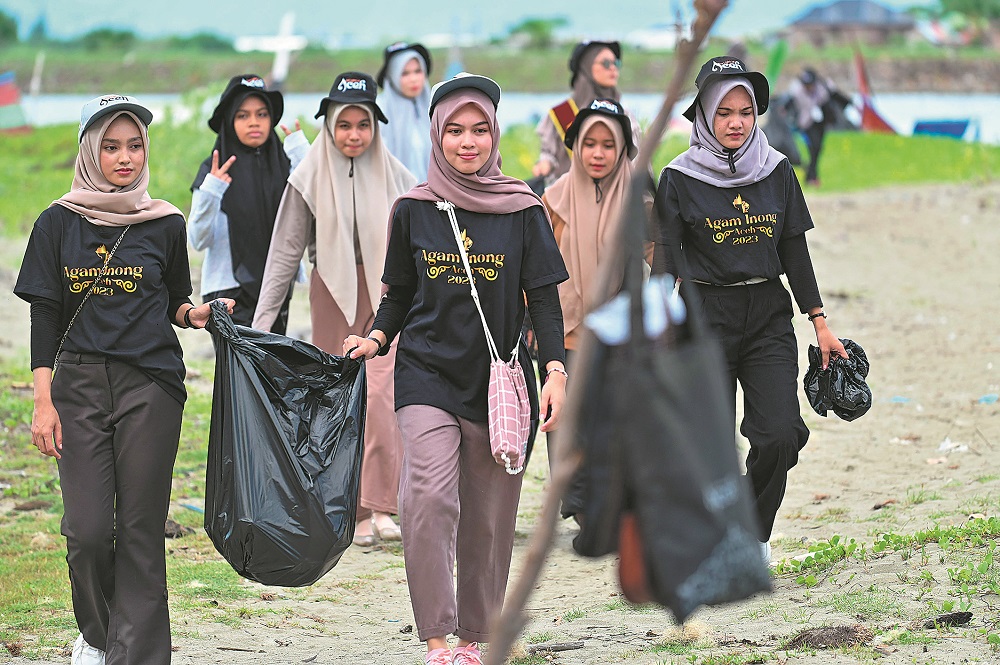All at sea
Growing risk of microplastics threatens Indonesia's coastal communities


A recent study conducted by researchers from Cornell University in New York noted that Indonesia has topped the global per capita intake of microplastics from 109 countries mapped.
The study, which was published in April in the Environmental Science & Technology journal, found that Indonesians consume 15 grams of microplastics monthly, a 59-fold increase from 1990 to 2018.
More than half of the microplastics consumed reportedly came from aquatic sources like seafood.
The research further suggested that rapid industrialization has prompted higher plastic demand, resulting in more waste being dumped into waterways and ending up in oceans.
Another study published in February by researchers from Mexico revealed that the intake of microplastics through seafood consumption might disproportionately affect the health of fishermen and coastal communities as they rely heavily on fish as their main source of protein.
Despite this concern, many Indonesian fishermen are still unaware of the danger of consuming microplastics.
Fishery products remain the most accessible and arguably most affordable protein source for them.
Among them is 63-year-old Danu Waluyo, a fisherman in Cilincing, North Jakarta, who always eats fish from his daily catch.
"Although as a fisherman, I catch fish every day, I never get bored of eating it," he told The Jakarta Post.
Suwandi, 37, another fisherman in Cilincing, also said he normally consumed fish four times a week.
"My family eats fish often because it provides great protein, especially for my children," Suwandi said, adding that they usually consumed seafood with lower selling prices that were not targeted for sale like swordfish and rabbitfish.
While Danu and Suwandi admitted that they often found single-use plastic caught in their nets and traps, both said that they were not really concerned about it.
"Maybe if the fish is distressed, they will eat anything, including plastic. But, if it gets into their stomach and we eventually consume, that's something I never realized," Suwandi said.


















